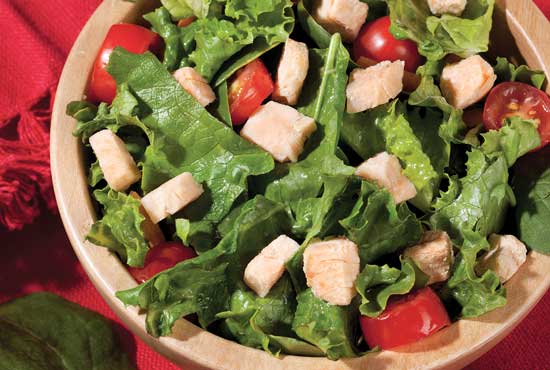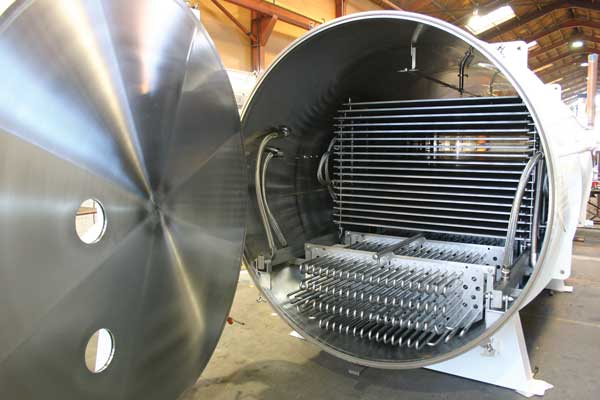Freeze-Drying Fundamentals
PROCESSING
Freeze-drying is a very gentle dehydration process used for preservation of high quality foods. The history and market for this technology will be reviewed in this month’s column, as will the science. Applications will be discussed as well.
The History and Market
Freeze-drying was invented by Jacques-Arsene d’Arsonval at the College de France in Paris in 1906. Later, during World War II, it was widely implemented to preserve blood serum. Since then freeze-drying has become one of the most important processes for preservation of heat-sensitive biological materials. During the 1950s, industrial freeze-drying of foods began. Freeze-drying is currently used as a preservation method for foods, pharma-ceuticals, and a wide range of other products.
The global freeze-dried food market is growing at 7.4% a year, according to Mordor Intelligence, and the U.S. market is expected to reach $66.5 billion by 2021. Fruits comprise the largest portion of the global freeze-dried food market, holding a 32% share. In addition, North America has the largest share of the global freeze-dried market, holding a 35% share. South America and Asia-Pacific are the fastest-growing markets.
The Basic Science and Associated Benefits
Lyophilization is the technical term for freeze-drying. Freeze-drying is the process by which the solvent (usually water) and/or suspension medium is crystallized at low temperature and removed by sublimation. Sublimation is the direct transition of water from solid state to gaseous state without melting.
 There are three stages in the process: freezing, sublimation drying, and desorption drying. The freezing phase is the most critical in the entire freeze-drying process. It is important to freeze foods rapidly in order to avoid the formation of large ice crystals, which deteriorate the final product quality. During the primary drying phase, the pressure is lowered through the application of a high vacuum, and heat is applied to provide the energy needed for the ice to sublime. This initial drying phase removes about 95% of the water present in the food. This slow step can take anywhere from several hours to two days. Application of too much heat during this phase could result in a loss in final product quality.
There are three stages in the process: freezing, sublimation drying, and desorption drying. The freezing phase is the most critical in the entire freeze-drying process. It is important to freeze foods rapidly in order to avoid the formation of large ice crystals, which deteriorate the final product quality. During the primary drying phase, the pressure is lowered through the application of a high vacuum, and heat is applied to provide the energy needed for the ice to sublime. This initial drying phase removes about 95% of the water present in the food. This slow step can take anywhere from several hours to two days. Application of too much heat during this phase could result in a loss in final product quality.
Another component of the primary drying process is condensation of the sublimed water vapor. Sublimation accounts for about 45% of the total energy consumption for the process, while application of vacuum and condensation each represent about 25% of the total energy consumption (Ratti 2001). A secondary drying phase is then needed to remove unfrozen water molecules remaining after primary drying. During this phase, the temperature is raised higher than in the primary drying phase in order to vaporize the water molecules. Pressure is frequently lowered during this phase, but not in all cases.
The final freeze-dried food typically contains between 1% and 4% moisture. Final food products are nitrogen sealed and packed in polybags or cans. They can be stored between 6 months and 3 years in polybags and 25 years or longer in cans.
Freeze-dried foods possess superior quality as compared with food dehydrated by other methods. The high quality is due to the absence of a liquid phase, as well as the low temperature of the process. Freeze-drying preserves flavor, color, and appearance, while minimizing thermal damage to heat-sensitive nutrients. In addition, the texture is well preserved due to the process occurring in solid state. Freeze-dried products are typically crisper and have rehydration ratios four to six times higher than conventional air-dried foods. Other key benefits of freeze-drying include the high recovery of volatiles, retention of structure and surface area, high yield, long shelf life, and reduced weight for storage, shipping, and handling.
The main disadvantage of freeze-drying is cost, due to its high energy consumption and high costs for both operation and maintenance. The energy required for freeze-drying is almost double that required for conventional air drying. In addition, the cost of freeze-drying is four to eight times higher than conventional air drying (Fink 1977). As a result, the process is only economically feasible for high value food products.
Freeze-Drying Equipment
Freeze-dryers consist of a few basic elements: refrigeration system, vacuum system, control system, product chamber or manifold, and condenser. The refrigeration system cools the condenser located inside the freeze-dryer. It can cool shelves in the product chamber to freeze the product. The vacuum system consists of a separate vacuum pump connected to an airtight condenser and attached product chamber. Control systems vary in complexity and typically include temperature and pressure sensing. Product chambers are typically either a manifold with attached flasks or a larger chamber with a system of shelves/trays on which the product is dried. The drying chamber is typically a horizontal cylinder containing the condenser, which is installed close to the trays. The food is spread on the trays and heat is supplied through radiation or conduction to the food. The condenser attracts the vapors being sublimed off the product and condenses them back into solid form (ice). In shelf freeze-dryers, the condenser can be located inside the product chamber (internal condenser, as shown in the image on page 72) or in a separate chamber (external condenser) connected to the product chamber by a vapor port.
Both continuous and batch freeze-dryers are commercially available. Batch dryers with capacities ranging from 100 kg to 1,500 kg per batch are common. There are two basic types of continuous freeze-dryers: 1) tray dryers in which the product is stationary on a tray and 2) tray dryers where the trays move through the dryer tunnel with locks for introducing and removing food without breaking the vacuum. In addition, dynamic or tray-less dryers can be used, in which the product is moved through the dryer by some means other than a tray, including belt, circular plate, and vibratory dryers.
Industrial freeze-drying is practiced through three types of commercial arrangements. The first is through large-scale, in-house freezing operations that typically only process one or very few products. Alternately, small to moderate in-house freeze-drying can be performed to produce a range of freeze-dried ingredients that are then combined to make the final commercial products, such as soups. Third, copacking freeze-drying facilities can custom freeze-dry foods for third parties.
 Equipment Manufacturers and Copackers
Equipment Manufacturers and Copackers
Equipment manufacturers include the following: GEA Process Engineering, Columbia, Md.; Cuddon Freeze-Dry, New Zealand; Zirbus Technology, Germany; HarvestRight, North Salt Lake, Utah; Parker Freeze-Dry, Pulaski, Wis.; SaintyCo, China; American Lyophilizer, Yardley, Pa.; Millrock Technology, Kingston, N.Y.; and others.
Copackers include the following companies: Mercer Foods, Modesto, Calif.; Oregon Freeze-Dry, Albany, Ore; Van Drunen Farms, Santa Rosa, Calif; Freeze-Dry Foods, Germany; Chaucer Freeze-Dry, United Kingdom; Paradise Fruits, Germany; Asahi Group, Japan; Apex Lyo, Country Club, Mo.; Thrive Foods, American Fork, Utah; European Freeze-Dry, Denmark; and others.
Commercial Applications in Food Processing
Some foods freeze-dry very well, but not all food is suitable for freeze-drying. Freeze-drying is commonly used for coffee, fruit, juice, vegetables, herbs, food flavorings, fish, seafood, eggs, and dairy. Individual food types can be freeze-dried, as can dishes with multiple ingredients, such as stews or soups. As a result, freeze-dried foods can be used for backpacking, camping, military rations, survival food storage, and space exploration. Generally, larger-sized foods (such as fruit or meat) need to be cut into smaller pieces prior to freeze-drying. Thermally sensitive materials, such as fruits, are good candidates for freeze-drying. These have become popular as snacks and ingredients in other foods, such as breakfast cereals. Meat and seafood require cooking before freeze-drying. For some foods, freeze-drying is not cost-effective.
Freeze-Drying Forecast
The cost of freeze-drying remains the greatest challenge around increased commercial implementation of this remarkable technology. Future advances will likely focus on this challenge. Pretreatments are one approach to reducing costs. Pretreatments, such as osmotic dehydration, ultrasound treatment, and infrared heating, have all shown potential to save energy and cost. In addition, final product quality can be improved through infrared pretreatment. Replacement of the heating source with microwaves or use of spray nozzles in the drying chamber also offer promise to reduce the cost of freeze-drying. Advances in these areas are expected to support a solid future for freeze-drying.
 Tara McHugh, PhD, Contributing Editor
Tara McHugh, PhD, Contributing Editor
Research Leader, USDA Agricultural Research Service, Albany, Calif.
[email protected]
References
Flink, J. M. 1977. “Energy Analysis in Dehydration Processes.” Food Technol. 31(3): 76–83.
Ratti, C. J. 2001. “Hot air and freeze-drying of high-value foods: a review.” Food Eng. 49(4): 311–319.


